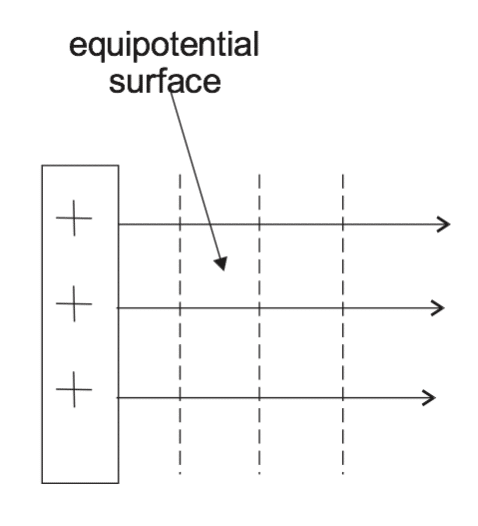Electric potential (V) at a point P is the work done in bringing a unit positive charge from infinity to that point in the electric field of another charge.
It is a scalar quantityA scalar quantity is a quantity that does not depend on direction. It can also be defined as a quantity with magnitude only. Examples of Scalar Quantities include area, density, distance,... More. Its unit is JoulesJoule is the SI (International System of Units) unit of energy and work. It is equal to the amount of work done when a force of 1 newton displaces a mass... More per Coulomb (J/c)
Electric potential = \( \frac{Work \; done}{charge} \)
V = \( \frac{w}{q} \)
If r = distance from infinity to the point charge
F = force of attraction
Q1 = Unit charges
Q2 = attracting charge
Work done = electric potential (V) x r = F x r
= \( \frac{Q_1 Q_2}{4 \pi \varepsilon_0 r^2} \scriptsize \; \times \; r \)
Q2 = 1
V = \( \frac{Q}{4 \pi \varepsilon_0 r^2} \)
Electrical potential between two points (distance between a and b)
= \( \frac{Q}{4 \pi \varepsilon_0 r^2} \left[ \frac{1}{a} \; – \; \frac{1}{b} \right] \)
Types of electric potential
Zero potential
All potentials around charges are measured using a reference point. Two reference points for charges are
- Earth
- A point at infinity
Equipotential surface
This is an imaginary surface drawn in an electric field such that all point on the surface have the same potential. Their characteristics are as follows:
- It is the same distance from the source of field
- The electric lines of force are always perpendicular to the surface
- The work done in moving a positive charge along the surface is zero




Responses